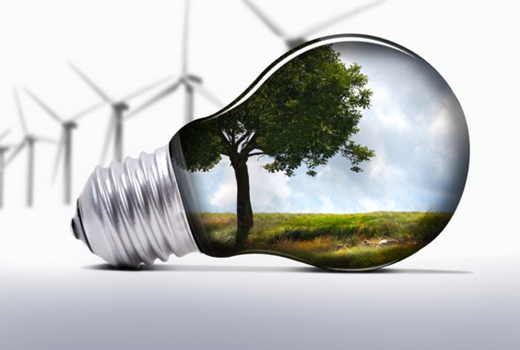Articulation to Action: the Air Force’s Energy Future
Adialogue has been ongoing about going green since the first Earth Day in the 1970s. We’ve made many strides in the direction of energy conservation and being more respectful of our planet. But 2013 and beyond is calling us to do more. The Air Force began this discussion in 2009, but the current mindset has done little to promote “out of the box” thinking and going green. Last year, I had the opportunity to listen to Col. Stacy Yike, Wing Commander at Hanscom Air Force Base, discuss culture change in regard to energy use. She said people at her base are starting to “get it” about energy, and that it’s rare that someone doesn’t turn off the light when they leave the room.
Though changes like this, as well as others, are happening at Hanscom Air Force Base, the biggest shift is the attitude, or culture, about energy use. How did those actions happen at Hanscom, and can we somehow package and deliver them to Wright-Patterson? Culture change is often considered to be difficult, but is it really? We recently hired a new employee in our clinic, and when asked if he would turn off his computer screen when he left each night, he did it. He said, “Why not save energy and money? Sounds like a good idea.” The question is, how do we create that attitude of stewardship in everyone?
A few weeks ago, I felt as if I had traveled into the “energy future” when I visited a company in southern Ohio. When I drove up to the facility, I was impressed by the wind turbine and solar panels in the field, on the roof and on the car ports. In addition, an electric Chevy Volt and numerous Toyota Prius
The carpet floor is made of small squares so if just one area is damaged the entire carpet doesn’t need replacing. In the men’s bathroom is a waterless urinal. It uses no water, and the toilets have dual flush capacity. It is estimated these systems require 40 percent less water than a conventional building the same size. Also, many sinks have only cold water, leaving hot water solely for the kitchen sink and fitness room showers. Everyone who works for this company is issued a long sleeve sweater because the heat is turned down from 72 to 68 degrees. Another innovation is that no one has a trash can at their desk. People bring their waste to a central area and separate it into compost, recycling material or trash.
After witnessing this display of possibilities, it occurred to me that this company is not “the future,” but rather it represents “the now.” As I drove away, I felt I was receding into the past. Visiting this facility made me realize how much progress can be made and someday “going green” will be the norm.

© iStockphoto.com/MCCAIG
Having a healthy military budget in the past allowed us the luxury of energy use without much thought. However, it may have prevented us from accurate insight into the future and often only addressed prevailing needs. Now – today – the necessity of visionary leaders is vital. We need leaders able to rise above the burden of daily requirements in order to look into the future to see where we are headed. Insightful and perceptive leadership is essential to guide us in creating a culture that reinforces energy independence and conservation. Fiscal constraints may be the perfect beginning to foster creativity about our energy future.
While we may not be able to incorporate all technologies listed above immediately, moving and thinking in that direction is an important and necessary start. Finances need to be funneled into long-term solutions like green innovation instead of short-term fixes. Until we can obtain the technology to run our buildings, this job can be outsourced to each and every individual on our team. “Turn it off when not in use and unplug it at night,” should be our mantra, especially on the weekend. That recent “unplug” weekend I mentioned earlier in this article saved the base more than $5,000, and that was only the first time we tried it. Data at Wright-Patterson has also shown that if the temperature is turned down only one degree across all buildings, the base saves $16,000 per month. Plenty of money can be saved, if we all pitch in.
So, we’ve been talking about going green since the 1970s. Isn’t it time to move from articulation to action?





























